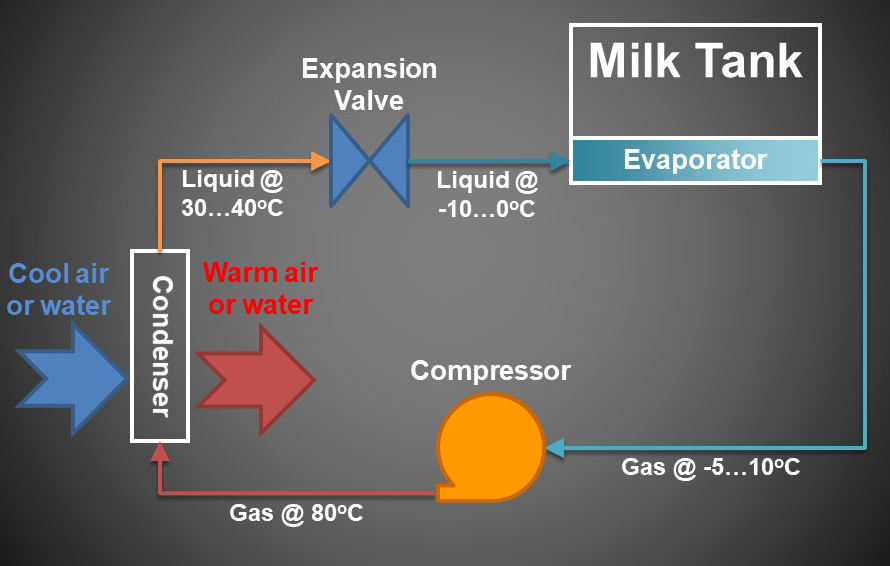- Home
- Knowledge library
- Core components of mechanical milk cooling
Core components of mechanical milk cooling
An overview of mechanical milk cooling and the refrigeration cycle, comprising condenser, evaporator and compressor. Plus Coefficient of Performance (CoP) explained.
Reducing the milk temperature to the required final level for storage requires mechanical cooling. This is the purpose of the refrigeration system in all dairy equipment. Broadly the system can be categorised as any one, or a combination, of the following:
- Ice bank tank
- Direct expansion (DX) tank cooling
- Ice builder and second stage plate cooler
The refrigeration cycle
Common to each is the requirement for a refrigeration cycle comprising condenser, evaporator and compressor, to provide the cooling effect. The following stages of a refrigeration system, shown in Figure 3, are necessary to make this a continuous process.
- Liquid refrigerant passes through an expansion valve. Here its pressure falls, and as its volume is unchanged, its temperature must also fall
- Cold refrigerant enters the evaporator where it absorbs heat from the medium to be cooled, causing it to evaporate to a gas
- The warmed refrigerant gas flows to the compressor where its pressure is increased, and as its volume is unchanged, its temperature must also rise
- The gas then flows through the condenser (which is cooled by air or water), where it rejects its heat and condenses back into a liquid

Figure 3: The refrigeration cycle within a DX cooling tank.
Coefficient of Performance
The efficiency of a milk cooling system is termed its Coefficient of Performance (CoP) which is the ratio between useful cooling energy achieved and electricity required to achieve it. Typically CoP values are in the range 1.5 – 3.5, where these mean that between 1.5kWh and 3kWh of cooling are achieved for every 1kWh of electricity purchased. Newer systems with advanced technology and good maintenance regimes will be at the higher end and sometimes exceed this whereas older systems with poorly maintained equipment will be at the lower end.

